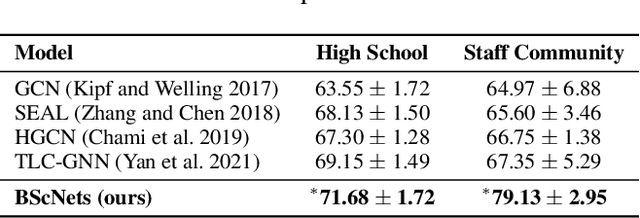BScNets: Block Simplicial Complex Neural Networks
Paper and Code
Dec 13, 2021



Simplicial neural networks (SNN) have recently emerged as the newest direction in graph learning which expands the idea of convolutional architectures from node space to simplicial complexes on graphs. Instead of pre-dominantly assessing pairwise relations among nodes as in the current practice, simplicial complexes allow us to describe higher-order interactions and multi-node graph structures. By building upon connection between the convolution operation and the new block Hodge-Laplacian, we propose the first SNN for link prediction. Our new Block Simplicial Complex Neural Networks (BScNets) model generalizes the existing graph convolutional network (GCN) frameworks by systematically incorporating salient interactions among multiple higher-order graph structures of different dimensions. We discuss theoretical foundations behind BScNets and illustrate its utility for link prediction on eight real-world and synthetic datasets. Our experiments indicate that BScNets outperforms the state-of-the-art models by a significant margin while maintaining low computation costs. Finally, we show utility of BScNets as the new promising alternative for tracking spread of infectious diseases such as COVID-19 and measuring the effectiveness of the healthcare risk mitigation strategies.
 Add to Chrome
Add to Chrome Add to Firefox
Add to Firefox Add to Edge
Add to Edge